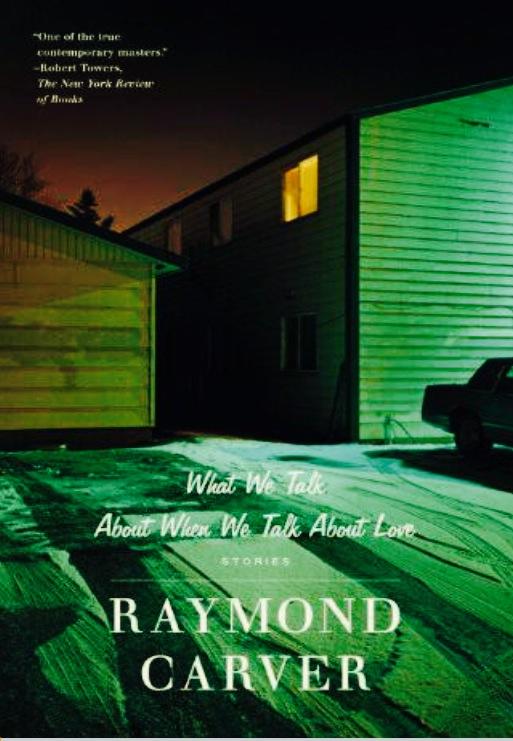Genre: Short Fiction
Author: Raymond Carver
Title: Why Don’t You Dance
First Publication: Quarterly West, 1978
# of Words: 1629
Style: Dirty realism, modernist, minimalism
Raymond Carver’s short story Why Don’t You Dance was first published in the journal Quarterly West in 1978, and was subsequently included in his short story collection What We Talk About When We Talk About Love (Knopf, 1981, 176 pages).
The story is centered on a drinking, middle-aged man who puts up a yard-sale. A young couple, possibly newly-wed, stops by to look for furniture for their new apartment. They make deals with the man, and buy a bed and a TV. The man gives them drinks, and asks them to dance. They comply, albeit uncomfortably. After a few weeks, the young girl talks about that incident to some friends, while trying to make sense of the situation, and eventually lets it rest.
Typical of most of his stories, Carver discards the conventions of writing fiction. Not much information is explicitly given about the characters. Not much happens plot-wise I can summarize it in one breathing: a man puts all his belongings on sale, two people buy some things, they dance, the girl tells her friends about it, end of story. Yet, we are not left wanting. We seem to know who the characters are; we know something happened prior, and that “there is more to it”. We find a certain gravitas in the shallowness of the narrative’s surface. We are confronted with Carver’s iceberg.
Ernest Hemingway, one of Carver’s influences, wrote about the iceberg approach to writing fiction:
“If a writer of prose knows enough of what he is writing about he may omit things and the reader, if the writer is writing truly enough, will have a feeling of those things as strongly as though the writer has stated them. The dignity of movement of an iceberg is due to only one-eighth of it being above water.”
(More on Hemingway’s Iceberg Theory here)
Why Don’t You Dance was written in such a manner. The prose was pared down until there was almost nothing left for the reader but the bones, the barest essentials, that there is a need to crack it open to get to the marrow – the real substance of the story. Consider how the story opens:
“In the kitchen, he poured another drink and looked at the bedroom suite in his front yard. The mattress was stripped and the candy-striped sheets lay beside two pillows on the chiffonier. Except for that, things looked much the way they had in the bedroom – nightstand and reading lamp on his side of the bed, nightstand and reading lamp on her side.
His side, her side.
He considered this as he sipped the whiskey.”
At the onset, Carver sets the scene – sparse in words, but replete in symbols and inferences. From the first few lines, we can glean a possible back-story. What was omitted by the author is in this case more important:
• Why is he drinking?
• Why is he selling his stuff?
• Why did he bother to arrange the furniture like “the way they had in the bedroom”?
• Who is referred to as “her”?
• There seems to be an emphasis on “his side” versus “her side”. Why is that so?
• What does the act of bringing out his bedroom suite to the front yard symbolize?
That is just the first part. As we read through the story, more questions arise. Questions that answer instead of perplex.
To help you plumb the depths of the story’s 7/8, I will leave you with the following guide questions:
• Why did Carver choose not to name the characters? (Except the boy, whose name is Jack.)
• How would you describe the boy and the girl’s personalities? Who would you say is more in control?
• Carver’s diction is rife with sex and intimacy. What are those words and how would you relate them to the relationship between that of the boy and the girl? That of the man and the girl?
• Why was the man desperate to dispose of his stuff? What do those things symbolize?
• When the man said, “They thought they’d seen everything over here. But they haven’t seen this, have they?” what does it mean? What is its implication?
• The story ends with the girl telling some people about what happened there in the front lawn. Could it be that something terrible or something grave happened there that she still tries to talk it out weeks after the incident happened?
Raymond Carver’s stories (this in particular) are not meant to be read for leisure. More often than not, they require a thorough reading as they leave much to one’s imagination.
Final question: Would you say that Carver is the master “carver” of his stories? Or, was it Lish?


